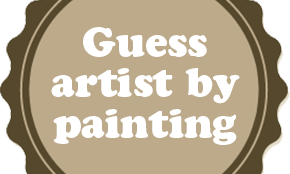| Hughes was born in London. In 1846 he entered the art school at Somerset House, his first master being Alfred Stevens, and later entered the Royal Academy schools. Here he met John Everett Millais and Holman Hunt, and became one of the Pre-Raphaelite group of painters. His first picture, Musidora, was hung at the Royal Academy when he was only 17, and thenceforth he contributed almost annually not only to the Royal Academy but later also to the Grosvenor and New Gallery exhibitions.In 1855 Hughes married Tryphena Foord, his model for April Love. Hughes died in Kew Green, London in 1915, leaving about 700 known paintings and drawings, along with over 750 book illustrations. Following the death of Tryphena Hughes in 1921, their daughter Emily had to move to a smaller house. There was, therefore, a shortage of space. As a result, she had her father`s remaining preparatory sketches, and all his private papers and correspondence, destroyed. He was the father of the English painter Arthur Ford Hughes and the uncle of another, Edward Robert Hughes.Hughes is buried in Richmond Cemetery. |
Oscar-Claude Monet was a founder of French Impressionist painting, and the most consistent and prolific practitioner of the movement`s philosophy of expressing one`s perceptions before nature, especially as applied to plein-air landscape painting. The term Impressionism is derived from the title of his painting Impression, soleil levant (Impression, Sunrise), which was exhibited in 1874 in the first of the independent exhibitions mounted by Monet and his associates as an alternative to the Salon de Paris.
Monet`s ambition of documenting the French countryside led him to adopt a method of painting the same scene many times in order to capture the changing of light and the passing of the seasons. From 1883 Monet lived in Giverny, where he purchased a house and property, and began a vast landscaping project which included lily ponds that would become the subjects of his best-known works. In 1899 he began painting the water lilies, first in vertical views with a Japanese bridge as a central feature, and later in the series of large-scale paintings that was to occupy him continuously for the next 20 years of his life. |
Andrew Newell Wyeth was a visual artist, primarily a realist painter, working predominantly in a regionalist style. He was one of the best-known U.S. artists of the middle 20th century.
In his art, Wyeth`s favorite subjects were the land and people around him, both in his hometown of Chadds Ford, Pennsylvania, and at his summer home in Cushing, Maine. Wyeth often noted: I paint my life.One of the best-known images in 20th-century American art is his painting, Christina`s World, currently in the collection of the Museum of Modern Art in New York City. This tempera was painted in 1948 when Wyeth was 31 years old. | His work is often described as Neo-Dadaist, as opposed to pop art, even though his subject matter often includes images and objects from popular culture. Still, many compilations on pop art include Jasper Johns as a pop artist because of his artistic use of classical iconography. |



